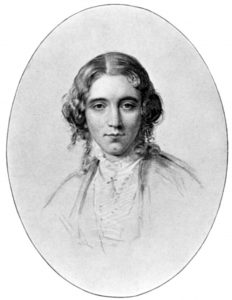Harriet Beecher Stowe, born in 1811 in Litchfield, Connecticut, wrote one of the most famous antislavery novels in American history.

Antislavery sentiments spread in the later 18th century and continued to grow into the early 1800’s. Wealthy merchants in the North began drifting away from slavery, and by the 19th century most northern states had abolished slavery or were gradually ending it. The South, however, continued to use slaves on their plantations considering their economy needed slaves to do the labor. The abolitionist movement in the North continued to grow, as a number of reformers criticized the institution of slavery and called for its end.
The tensions between the North and the South were widened with the increasing popularity of the abolitionist movement. The abolitionist movement gave rise to a number of new writers who were different from the mainstream authors of their time, such as women and African Americans. One of these authors was Harriet Beecher Stowe. Stowe was one of 13 children who are became either ministers, teachers, or reformers. Harriet was more educated than the average woman of their day. She was influenced by her father’s antislavery attitude, which led her to become an activist for many causes. Stowe was so dedicated to abolition, she even housed slaves that had escaped from their masters via the Underground Railroad.
When the Fugitive Slave Act of 1850 was passed by Congress, allowing the capture and return of runaway slaves, Stowe decided to put her thoughts about the institution of slavery to paper. In 1852 Stowe published Uncle Tom’s Cabin, a novel that had such an impact that many consider it one cause of the Civil War. The novel detailed the harsh realities of slavery in the South and the mistreatment of slaves by their owners. In one scene a slave pleads, “I have been careful, and I have been patient, but it’s growing worse and worse; flesh and blood can’t bear it any longer, – every chance he can get to insult and torment me, he takes” (Stowe Chapter 3). The cruel treatment of slaves by their masters was a choice, a choice that caused the North to fight against them and their disgusting treatment of human beings.

Uncle Tom’s Cabin became the number one selling book of the century, causing Stowe to become one of the most influential reformers of the abolitionist movement. Her novel inspired others to take action in the name of equality. Stowe’s actions widened the divide that eventually led to the Civil War. Although the Civil War did not result in the end of slavery, it progressed the movement that was sparked by Stowe’s novel.
Stowe continued to write abolition essays and papers for magazines and journals. Although Uncle Tom’s Cabin is considered controversial, mainly because of its use of racial stereotypes, it remains a staple of abolitionist writing. Her courage and dedication to the movement influenced thousands to take a step in the right direction towards equality.
Works Consulted
Biography.com Editors. “Harriet Beecher Stowe.” Biography.com, A&E Networks Television, 27 Jan. 2015, www.biography.com/people/harriet-beecher-stowe-9496479.
Stowe, Harriet Beecher. “Uncle Tom’s Cabin.” The Norton Anthology: American Literature, 1820-1865. New York: W.W. Norton and Company, 2012. 816. Print.